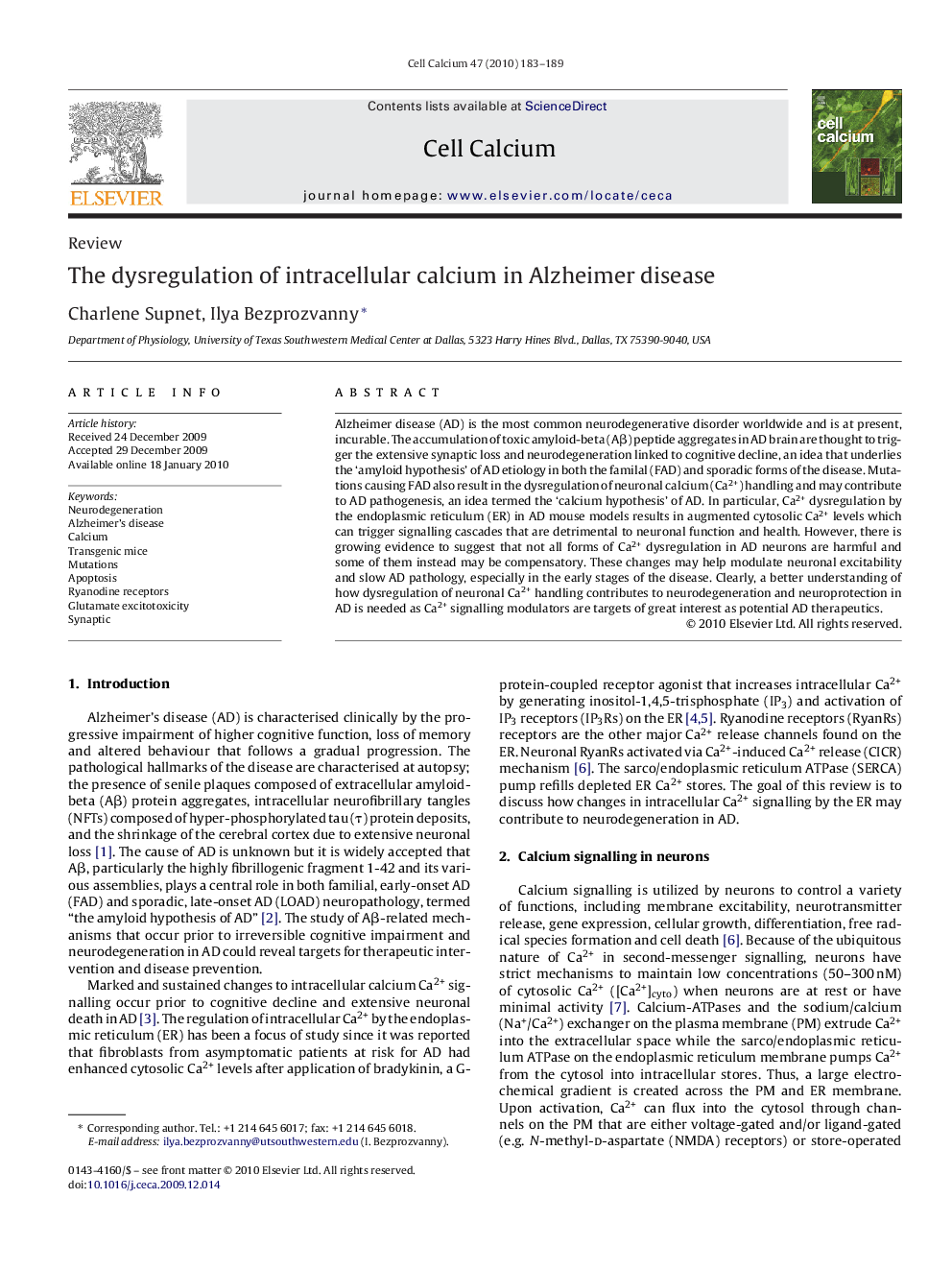| Article ID | Journal | Published Year | Pages | File Type |
|---|---|---|---|---|
| 2166348 | Cell Calcium | 2010 | 7 Pages |
Alzheimer disease (AD) is the most common neurodegenerative disorder worldwide and is at present, incurable. The accumulation of toxic amyloid-beta (Aβ) peptide aggregates in AD brain are thought to trigger the extensive synaptic loss and neurodegeneration linked to cognitive decline, an idea that underlies the ‘amyloid hypothesis’ of AD etiology in both the familal (FAD) and sporadic forms of the disease. Mutations causing FAD also result in the dysregulation of neuronal calcium (Ca2+) handling and may contribute to AD pathogenesis, an idea termed the ‘calcium hypothesis’ of AD. In particular, Ca2+ dysregulation by the endoplasmic reticulum (ER) in AD mouse models results in augmented cytosolic Ca2+ levels which can trigger signalling cascades that are detrimental to neuronal function and health. However, there is growing evidence to suggest that not all forms of Ca2+ dysregulation in AD neurons are harmful and some of them instead may be compensatory. These changes may help modulate neuronal excitability and slow AD pathology, especially in the early stages of the disease. Clearly, a better understanding of how dysregulation of neuronal Ca2+ handling contributes to neurodegeneration and neuroprotection in AD is needed as Ca2+ signalling modulators are targets of great interest as potential AD therapeutics.
